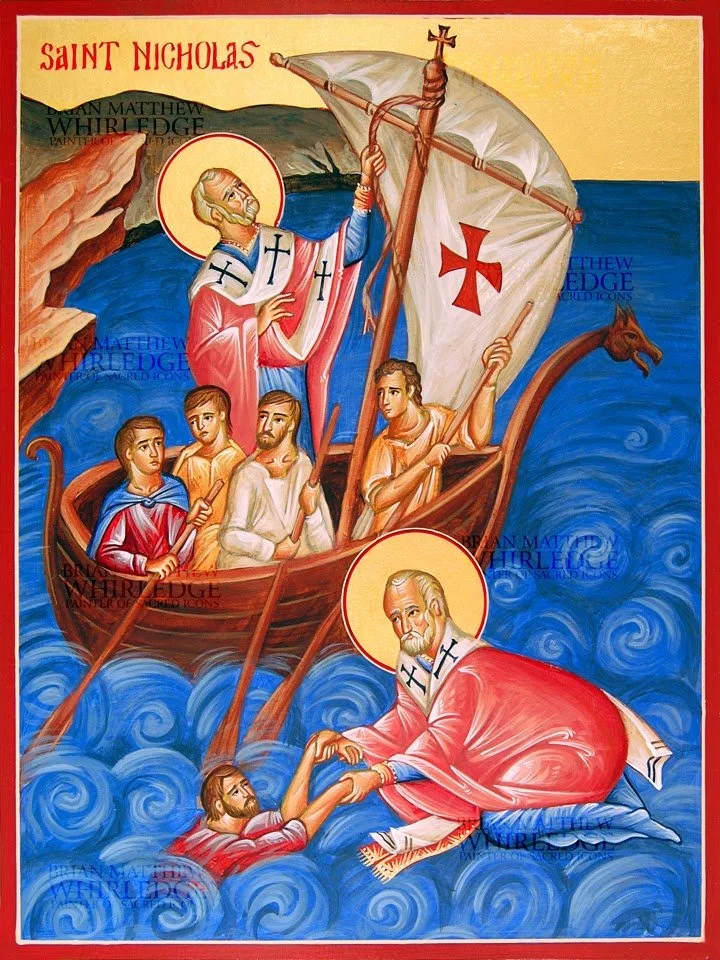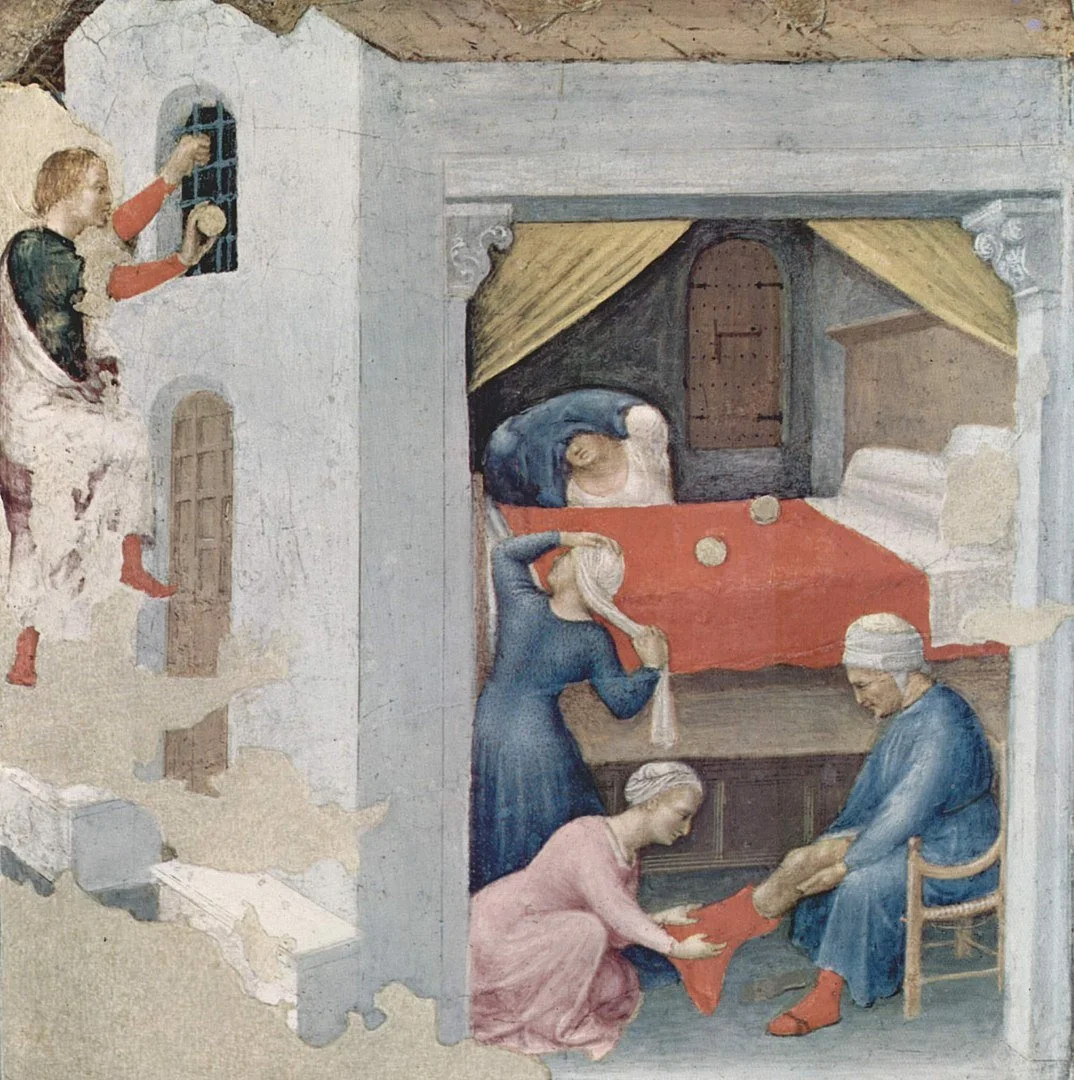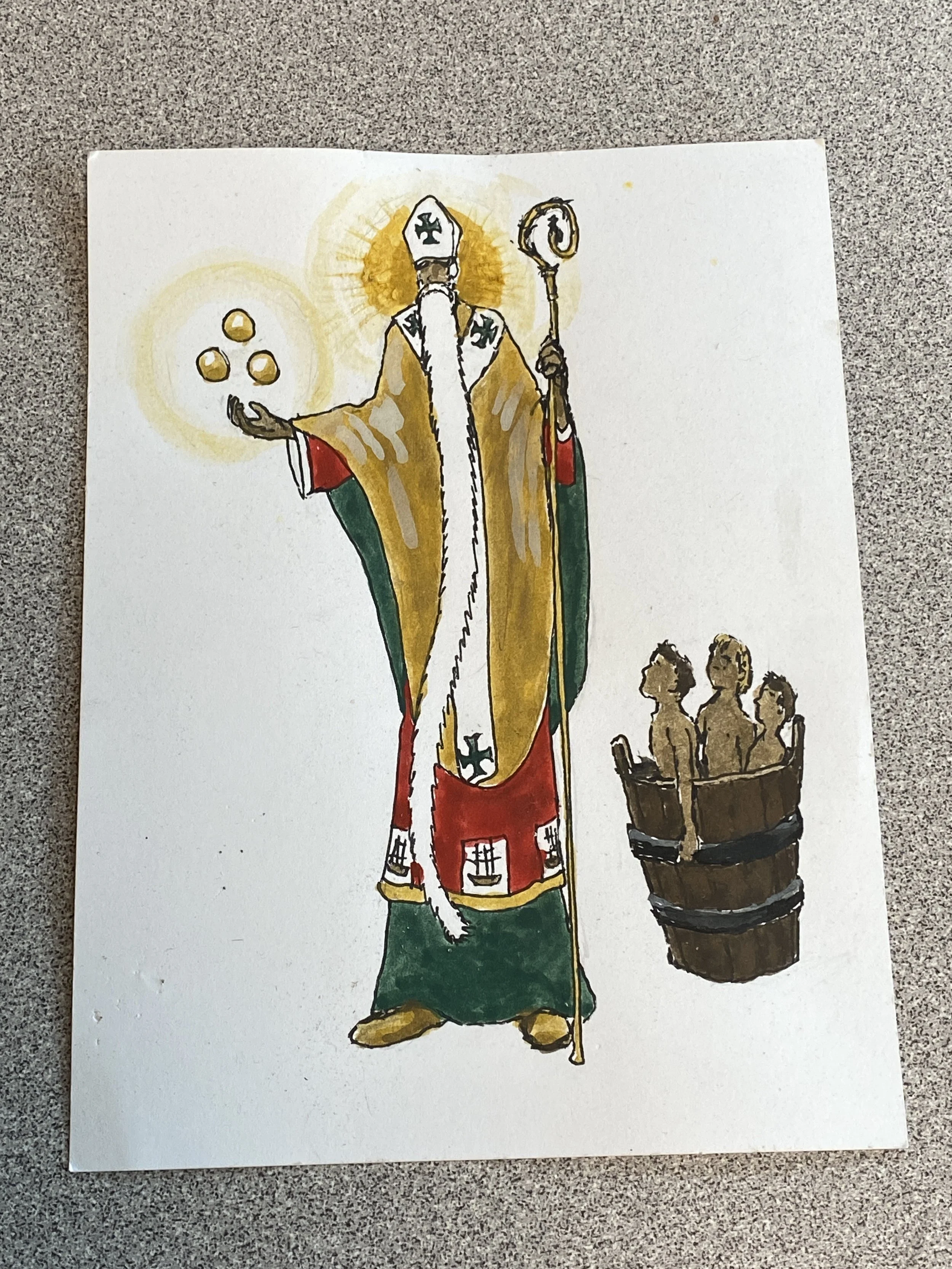A famine had hit the small Italian village hard and people were getting desperate. The hunger pangs were relentless, every scrap of food was fiercely guarded, and gaunt hollow faces wandered the streets in search of sustenance.
Those with food to sell were poised to profit greatly. None knew this better than the local butcher. Working in blood and entrails all his life had rendered him a cruel, godless man who never passed up an opportunity to take advantage of a desperate situation. Meat meant money and this particular butcher often chose to define meat in very broad terms.
Rats, cats, horses, dogs: their flavors could often be masked in the heavy spices of a sausage or passed off as ham, cured and smoke in the butcher’s dingy smokehouse or pickled in his big wooden pickling tub. Patrons never fully trusted the butcher’s offerings, but beggars can’t be choosers, especially during a famine.
This particular day in the third century, the butcher had hatched an exceptionally heinous plan. It all came about when he had been rooting about in his shop, looking for any scrap left on a bone that he could sell at exorbitant prices. The pickling tub was full of brine but no meat. The smokehouse sat clear, empty, dark. The meat was gone.
Facing his desperate circumstances, the butcher was snapped to attention by a sound: children playing in the streets. A dark, soot-black thought invaded his mind like a stormcloud. At first he dismissed it, the last shred of his humanity fighting for its rightful place. But as he looked about at his empty shelves and thought of his diminished coffers, the butcher’s heart hardened along with his resolve.
Luring them in was easy. The three boys had been playing in the streets, hoping to keep their minds off of the relentless hunger they’d been learning to live with. Their parents were off working the fields and they were free to roam the mazelike streets of stone, getting lost in the jovial games of adolescence.
“Would you boys like some meat?” the gruff butcher called out as the boys dawdled by. Startled, their astonishment was quickly replaced by the allure of food.
“I just need some help moving some barrels and I’ll pay in meat,” the butcher explained through a strained smile, his blackened teeth shimmering in the midday sun. The three boys looked to one another and, spurred on by their aching bellies, they reluctantly stepped into the butcher’s shop.
Several days later, a man named Nicholas was visiting the region to help the hungry. He was a devout man and was the acting bishop of the land. Talking to the butcher, he could see through this evil man’s lies and demanded to see inside his shop. Upon inspection, Nicholas was horrified to find the remains of the three boys in the pickling tub, the butcher preparing to sell them as pork.
Giving the sign of the cross, the three boys arose from the brine, resurrected from their horrendous death by Nicholas, a pious man of God.
This bishop was later canonized into Saint Nicholas of Myra, who serves as the saintly origins of Santa Claus. While this story of his miraculous revival of these murdered children is appalling to modern readers, worshipers of the Middle Ages celebrated it in stained glass and frescoes, where St. Nicholas is often shown next to three naked children in a wooden tub.
Believe it or not, this imagery served as the beginning of my newest holiday card design. I had taken an interest in iconography, which is the meaning that we give to symbols. Iconography is used heavily in Christian art, in particular in depicting the myriad saints. Each saint has symbols associated with them which often connect to their life story or the miracles attributed to them during their life or postmortem.
The iconography of Saint Nicholas of Myra has three main symbols. In addition to the pickling tub with three boys, he is often shown with ships (in reference to another miracle he performed involving sailors and an unexplained abundance of wheat), and lastly, three golden balls.
Saint Nicholas by Brian Matthew Whirledge
The three golden balls allude to Saint Nicholas’ secret gift giving. There once was a poor but devout man who was blessed with three daughters. Not being able to afford the dowries necessary to marry them off, the man was faced with the possibility of his daughters being destined to a life of poverty and possibly, prostitution. Nicholas had heard of this pious man’s plight and took it upon himself to secretly deliver three bags of gold coins to pay for the daughters’ dowries, saving them from the streets.
Thus, Saint Nicholas of Myra is often depicted holding three golden balls. It was with this imagery in mind that I began to design this year’s holiday card. I started with the balls and the tub of three boys next to Saint Nicholas in his bishop adornments, complete with a golden staff. I knew that the wooden tub of naked boys was a little odd for Christmas, but I also found it so fascinating and thought it might strike that right chord of weird.
I was wrong. After sleeping on it for a night and seeing it with fresh eyes, I knew it wasn’t right even before showing it to the studio boss upstairs. “No,” Ashley said flatly and I told her that she needn’t say more.
After turning up the festive dial with his garb and omitting the pickling tub of resurrected boys, my second attempt hit home, striking that right balance of intrigue and joyeux noël. I am more enamored than ever by iconography and its saintly origins, but a good artist is also a good editor and the new design serves its purpose better in the end.
Pick up your 2025 Holiday Cards to ramp up your gift giving in our ONLINE SHOP. Each box comes with 12 cards and red envelopes, and the card has a brief, family-friendly (I promise) blurb about Saint Nicholas of Myra on the inside.
And don’t forget to celebrate the Feast of St. Nicholas on December 6! Just don’t serve pork.







